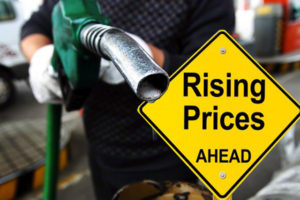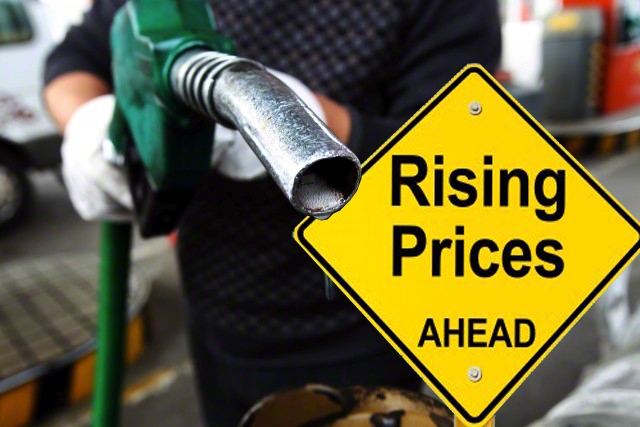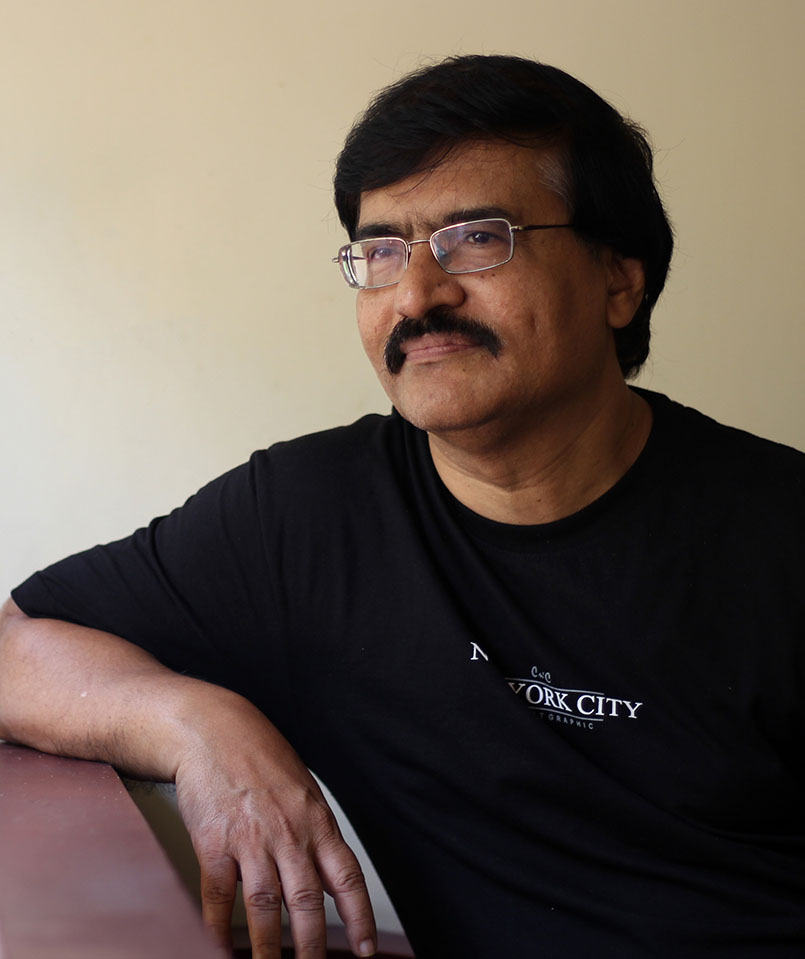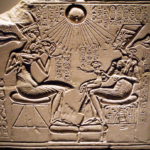“You can fool some of the people all of the time, and all of the people some of the time, but you cannot fool all of the people all of the time.”
― Abraham Lincoln
 There is this joke about a Christian priest. In the course of worship services, collection plates (or offertory bags) are usually passed around to take contributions from the congregation. The priest of our story believed that as the representative of god, he had a right to a share of the collection. So, he devised a method for dividing the collections between him and god. He drew a circle on the floor and dumped the collection of the day over it. The money that fell inside the circle was the priest’s share and the rest belonged to the divine. As time went by, the priest’s needs increased. And he kept increasing the size of the circle. The priest turned fatter by the day and god apparently died of hunger. (OMG! God cannot die!!)
There is this joke about a Christian priest. In the course of worship services, collection plates (or offertory bags) are usually passed around to take contributions from the congregation. The priest of our story believed that as the representative of god, he had a right to a share of the collection. So, he devised a method for dividing the collections between him and god. He drew a circle on the floor and dumped the collection of the day over it. The money that fell inside the circle was the priest’s share and the rest belonged to the divine. As time went by, the priest’s needs increased. And he kept increasing the size of the circle. The priest turned fatter by the day and god apparently died of hunger. (OMG! God cannot die!!)
The government has been doing more or less the same when it comes to taxing petroleum products. In Nov 2014, when the present (NDA) government at the Centre had been in office for some six months, it was levying excise duty of Rs.9.20 per litre on petrol and Rs.3.46 on diesel. Then the international crude price started dropping. But government did not allow the prices of petroleum and diesel to fall correspondingly. It kept jacking up the duties. It is difficult to fault the government on this since cheap fuel increases consumption, which in turn depletes foreign exchange reserves, widens trade gap and increases pollution. But, the question is, how cheap is cheap fuel? Is petrol at Rs.90.00 and diesel at Rs.80.00 per litre cheap? The government apparently thinks it is.
In January 2016, crude price fell to US$ 28.1 per barrel. The PM credited it to his personal good luck. Nobody has any quarrel on that. But, many believed that it would eventually turn to bring good luck to ordinary citizens too. They hoped that having reaped windfall revenues because of cheap crude, the government would cut back on duties to keep prices at affordable levels in the event of future price increases. People (at least most of them) also expected that part of the revenue it raked in would be used to pay off the liability in the form of ‘Oil Bonds’, created by fuel subsidy enjoyed by consumers when crude prices ruled around US$ 150 a barrel during the time the previous government. Unfortunately, it is now turning out that the government has decided that it is not the prerogative of the citizens to have share of such good fortunes. (No ‘Sab ke saath sabke vikas‘ on ‘thel‘ my dear Watson!)
At the beginning of this month (October 2018), the excise duty stood at Rs.19.48 per litre on petrol (which was Rs.9.20 in Nov 2014). The duty on diesel was Rs.15.33 per litre (against Rs.3.46 in Nov 2014). The Union government had also increased dealer commission from Rs.2.66 to Rs.3.66 per litre. All this was fine as long as crude prices remained under US$ 50 a barrel. Now crude is selling at over US$85. But the government sticks with more or less the same level of duties it had been levying when crude was costing under US$ 30 a barrel. Is it not unfair and arbitrary?
But it is not the Centre alone. Let us look at what the States have been doing. States charge Value Added Tax (VAT) as a percentage on the price of fuel at the petrol pump level. This price is the ‘Price of crude + Entry Tax + Refinery Processing + Oil Marketing Company Margin + Freight Cost + Dealer Commission’. Since the VAT is levied ‘ad valorem’ (on the value), when the price at the pump level increases, the revenues of the States automatically go up correspondingly! This is the secret behind the joy of the state Finance Ministers when oil prices go up. They are happier when the Centre increases excise duty. But states were still not content. They did not like the Centre alone minting money on fuel taxes. So States too increased their VAT rates. For instance, in Nov 2014 the rate of VAT was 20% in Delhi. It is now 27%.
VAT varies from state to state. Maharashtra government levies the highest VAT on petrol and diesel at 39.12% and 24.78% respectively in Mumbai, Thane and Navi Mumbai. For the rest of Maharashtra, the rates are 38.11% for petrol and 21.89 for diesel. On petrol, VAT is 35.12% in Punjab, 35.77% in Andhra Pradesh, 35.78% in Madhya Pradesh, 30.37% in Kerala, 25.25% in West Bengal and 26.9% in UP. Incidentally, when Maharashtra reduces Rs.2.50 on VAT and West Bengal and Kerala do not, fuel still stays cheaper in West Bengal and Kerala in comparison to Maharashtra and many other states.
We are often told by government and party spokespersons that the Centre shares 42% of the excise duty it collects with the States. What most of us do not know or have failed to note is that the excise duty has three elements viz. Basic Excise duty, Additional excise duty (Now ‘Road Cess’) and Special Additional excise duty. On Oct 4, 2018, the breakup respectively was Rs. 4.48+8+7=19.48 on Petrol and Rs.6.33+8+1=15.33 on diesel. On Oct 5, the central government cut the Basic Excise duty by Rs.1.50. The result is that the basic Excise Duty on petrol fell to Rs.2.98 and on diesel to Rs.4.83. It has correspondingly brought down the excise duty share of the States. Apparently, the Centre actually gave up only 87 paise while the states indirectly contributed 63 paise on each litre of petrol and diesel! However, the entire credit for the reduction has been taken by the Centre! And very cleverly, the Union Finance Minister has thrown a challenge to the States to follow suit!! (I would be happy to be corrected if my understanding is wrong on this point.)
The problem is that when anyone raises the question about skyrocketing fuel price, supporters of the government ask whether we want a return to the subsidy regime of the previous governments. It is a silly ploy to gloss over the unpleasant truth. BJP, the party now heading the government at the Centre, was in opposition during the previous UPA government. It was unsparing in its criticism of the government for what it termed the failure of the government to control fuel prices. While in the opposition, the party had no objections about fuel subsidies. In fact, the party-men cried themselves hoarse and disrupted Parliament demanding it. But, today nobody is seeking fuel subsidies – neither political parties nor citizens. The plea is for the government to reduce the taxes it was justified in levying when crude prices had crashed. It is a double whammy for the citizens. First, the government refused to pass on the benefit of lower crude prices to the consumer. And now it refuses to cut down on duties when crude prices have increased three fold and fuel has become too dear to most. (Incidentally, the Hon. Tourism Minister of India says that petrol is used only by the affluent! And he hails from Kerala. So much for his idea of affluence.)
Of course, the government and its supporters have been justifying this extortion on many grounds. One of it is the claim that the present government had to settle huge amounts of Oil Bond liabilities created by the previous UPA Government. Sri Dharmendra Pradhan, the Hon Petroleum Minister, tweeted in June 2018: “Having sensed that it was not going to return to power, the earlier government issued oil bonds to the tune of Rs 1.44 lakh crore. This load was handed over to our government. We inherited this huge load and paid additional Rs 70,000 crore as interest.”
Now, what the heck are these ‘Oil Bonds’?
The UPA government issued ‘Oil Bonds’ to Oil Marketing Companies (OMCs) to make good the losses the companies had been incurring on account of the subsidized rates at which they marketed petroleum products. Instead of immediate settlement, government issued long-term bonds (Oil Bonds) to the companies to cover their under-recoveries. Government paid interest on the bond and promised to redeem the bonds at maturity. This arrangement remained only until 2009-2010. Thereafter, government straightaway settled the dues. In June 2010, Petrol prices were deregulated by the UPA government. The present NDA government decontrolled diesel prices in October 2014. Subsidy regime ended. But, Oil Bonds worth Rs.1.44 lakh crore remained outstanding when the new government assumed office. To that extent, the Hon Minister was right. The rest of his tweet is long on politics and short on facts.
The Minister suggests that in 2010 itself the second UPA government had resigned itself to a miserable defeat in an election it would face four years later. So, it issued Oil Bonds to burden the next government. That is politics and I have no desire to get into arguments on that. The only point I wish to make here is that the Minister should not overlook the fact that his party then in opposition was putting all kinds of pressure on the UPA government for fuel subsidies. Admittedly, ‘the compulsions of coalition politics’ drove many decisions that government took. And I have no inclination to shed any tears that it paid the price for it.
Now, how true is the claim of the Minister that his government had paid interest of Rs.70,000 crore on the oil bonds? Simple arithmetic shows that this would mean an average annual interest payment of Rs.17,500 crore on bonds having a nominal value of Rs.1,30,000 crore. It works out to 13.5% interest. Could the government have paid interest at such high rates to its own Oil companies? No way!
Incidentally, in June 2018, Sri Piyush Goyal, who was then the Finance Minister too, said, “Also, interest paid on oil bonds between 2014-18 is Rs. 40,226 crores”. So, the interest amount was not 70,000 crore as claimed by the Petroleum Minister. The figure of Rs.40,226 crore works out to an annual interest payment of around Rs.10,057 crore or an interest rate of 7.7%. (The Petroleum Minister later corrected himself). That is realistic. In fact, the oil bonds currently outstanding have a rate of interest varying from 6.35 per cent to 8.4 per cent.
Finally, what is the truth about outstanding Oil Bonds with which the present government is overburdened? Incidentally, a question on this was asked in Parliament by V Elumalai, a Lok Sabha Member from Tamil Nadu as follows:
(a) whether the Government has noted that there were Rs 1.30 lakh crore of oil bonds which are unpaid bills of oil companies from 2009-14;
(b) if so, the details thereof.
Answering this question in Parliament on August 10, 2018, the Hon Petroleum Minister said, “As on 31st March 2014, bonds of the nominal value of Rs 1.34 lakh crore were outstanding. Oil bonds to the tune of Rs. 1.30 lakh crore were outstanding as on March 31, 2015.” Note that the government chose to stick to data valid as of March 31, 2015, although the reply was given in Aug 2018. How much was outstanding as on August 10, 2018, the date on which the Minister gave the reply? It too was Rs.1.30 lakh crore. It means that only Rs.4000 crore worth of bonds were paid off by the present government in the course of the last four years. (Source: Receipt Budget 2018-19, page 61, ‘2E SPECIAL SECURITIES ISSUED TO OIL MARKETING COMPANIES IN LIEU OF CASH SUBSIDY’).
Between 2014-2015 and 2017-2018, a total of Rs.7,49,485 crore was collected by the central government as duties on petroleum products (petrol, diesel and aviation fuel). Of this, Rs.40,226 crore was used to pay the interest due on outstanding oil bonds. Only two Oil Bonds worth Rs. 1,750 crore each, matured during this four-year period. The next maturity date falls only in October 2021.
In short, the total sum utilized by the present government in settling the liabilities related to Oil Bonds created by the previous government is confined to interest of Rs. 40,226 crore, and the redemption of oil bonds worth Rs. 3,500 crore – a total of Rs 43,726 crore. That is less than SIX percent (5.8%) of the total sum of Rs.7,49,485 crore collected as duties on petroleum products over the last four years! And the government tells us that it has to keep squeezing us since it had to clean up the Oil Bonds mess left by the previous government!
Pray, where did the remaining amount close to Rs. 7,06,000 crore go? Of course, the government has been building highways. But most highways are built of BOT (Build/Operate/Transfer) basis and citizens have been paying handsome sums as toll on almost all highways. Government has also been constructing toilets under its ‘Swatch Bharat Mission’. But, we have been paying Swatch Bharat Cess on services and that was supposed to take care of toilet construction. That apart, is the government proposing to run this nation entirely on duties on fuel sir?
And why did the government choose not to utilize part of this windfall revenue to buy back the Rs.1.3 lakh crore worth of outstanding Oil Bonds? (I assume that early buy back was an option on the Oil Bonds. If not, it could have created a fund for its redemption.) After all, that money was taken out of the pockets of people who had earlier enjoyed the subsidies. Why should the government pay an annual interest of around 10,000 crore on the bonds to its own companies? Well. The interest is earned by PSU oil companies. So, government ultimately loses nothing. Besides, once the Oil Bonds are redeemed, the government cannot keep putting the entire burden of escalating fuel prices on the previous governments. Remember, that this government has been cleaning up the mess created by previous governments, starting right from the days of Nehru! Obviously it takes time and needs many more terms beyond 2019!!
———————











